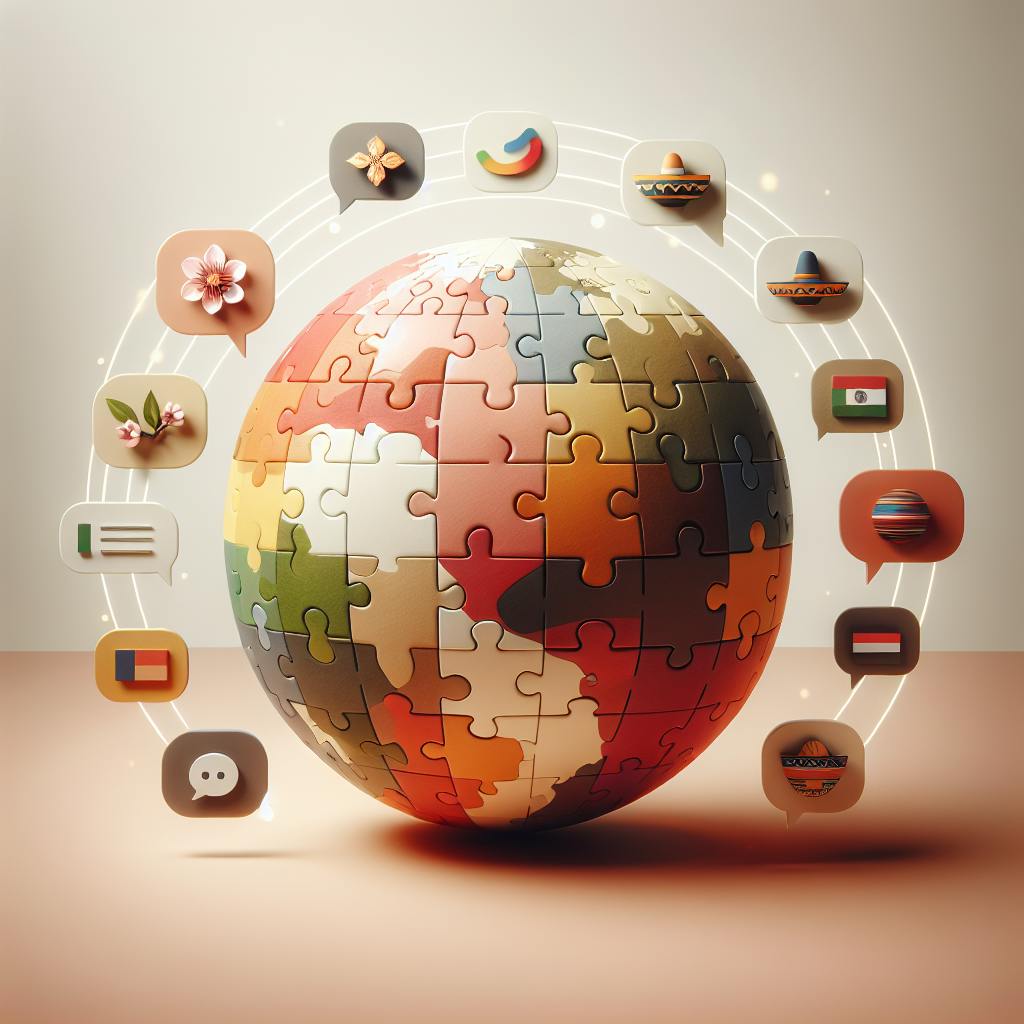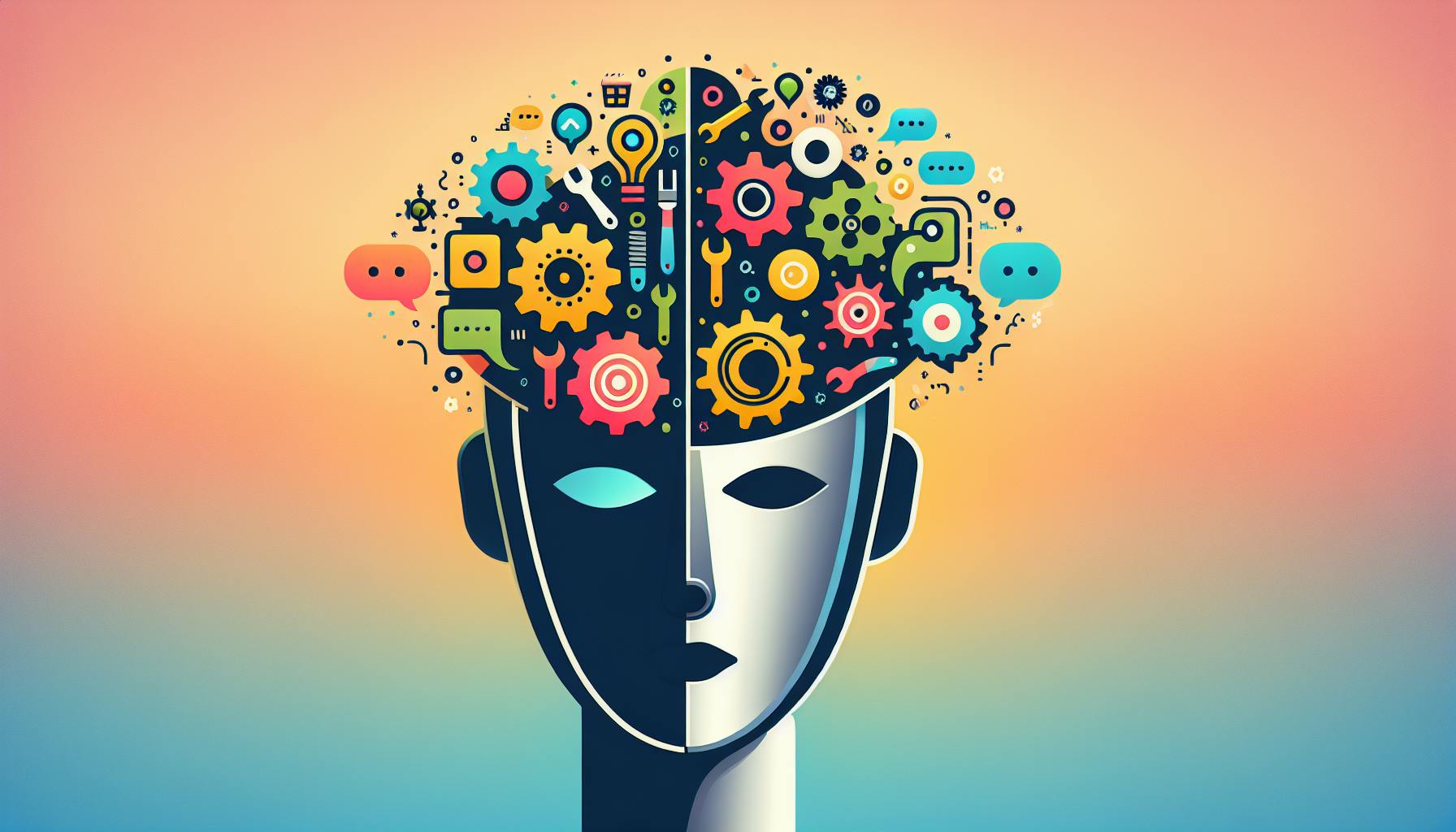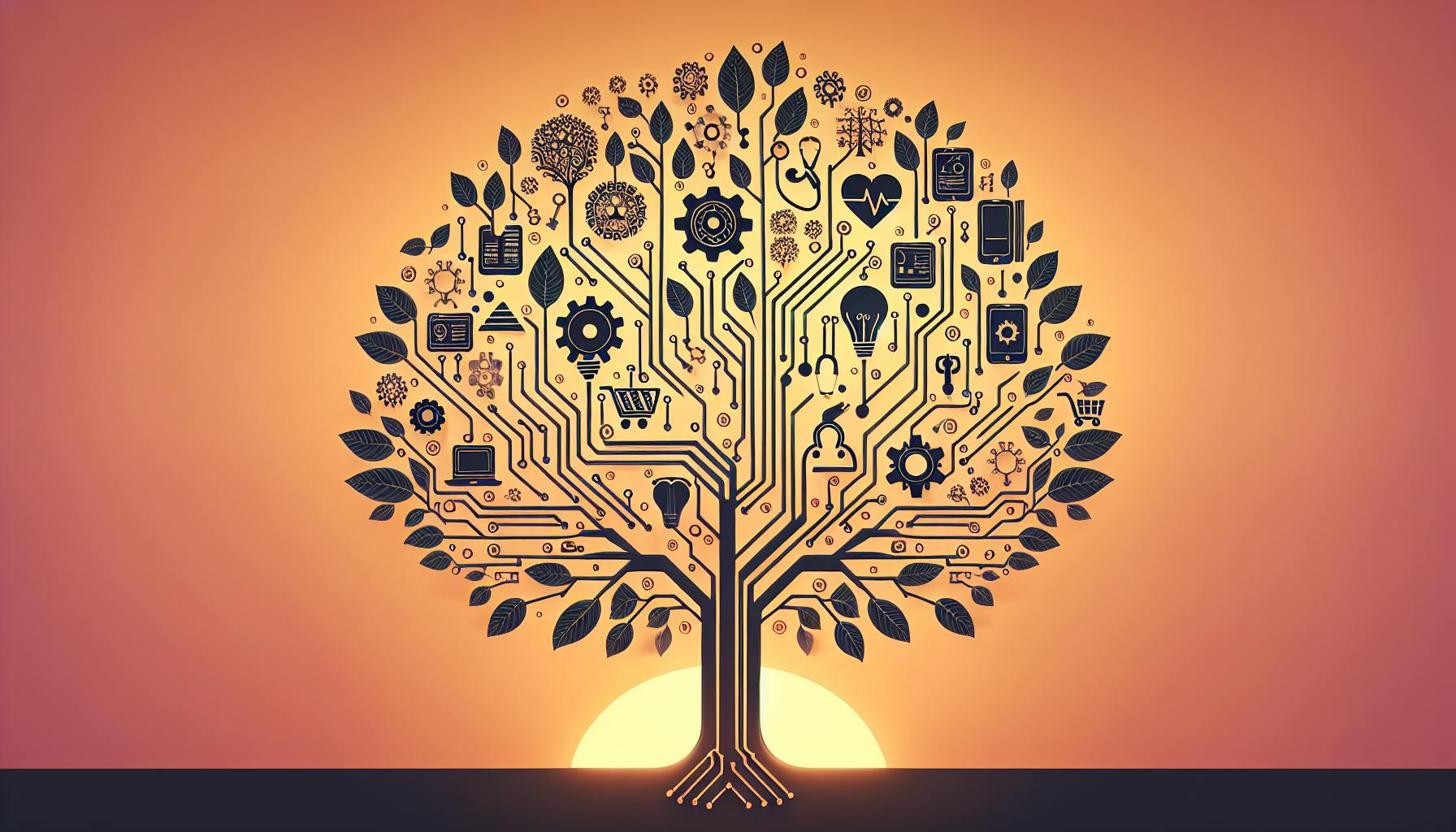We can all relate to the daily struggle of managing overwhelming email inboxes.
Luckily, ChatGPT offers an innovative solution to streamline email responses and maximize productivity.
In this post, you'll discover how to harness ChatGPT's capabilities to craft quick, professional, and personalized replies that elevate your email efficiency.
Introduction: Harnessing ChatGPT for Enhanced Email Efficiency
ChatGPT is an impressive AI assistant that can help businesses craft quick, professional email responses. Its conversational nature allows generating messages that sound authentic while ensuring consistency across communications.
With the ability to understand context, tone and customize answers, ChatGPT streamlines email workflows. Teams can respond faster to customer inquiries and internal requests.
Key benefits of using ChatGPT for emails include:
-
Personalized replies: ChatGPT grasps the initial message's intent to shape suitable responses. It makes emails appear more human by mirroring language patterns.
-
Error reduction: The AI detects insensitive, incorrect or risky suggestions to prevent problematic content. This safeguards brand image with thoughtful, appropriate emails.
-
Consistent messaging: Employees can consult ChatGPT to align responses with brand voice, guidelines and messaging priorities. This establishes consistent communication across the organization.
-
Time savings: ChatGPT quickly suggests complete email drafts for review and edits. By handling the writing, it enables employees to send more emails in less time.
As AI language models progress, ChatGPT has compelling applications for customer service, marketing and workplace productivity. With thoughtful integration, it can meaningfully enhance business email efficiency.
What is the best way to use ChatGPT?
To get the most out of ChatGPT, there are a few best practices to follow:
Provide Clear and Specific Instructions
When prompting ChatGPT, it's important to give clear, detailed instructions. Avoid vague or ambiguous language. Instead of saying "write an email response", specify who the email is to, what it should contain, the tone and purpose, etc. The more context and direction you provide, the better the output will be.
Break Down Complex Requests
If your request involves multiple steps or components, break it down into smaller, simpler queries. Asking complex questions in one prompt often leads to a generic or incomplete response. Guide ChatGPT step-by-step to ensure accuracy.
Use System Commands
Make use of ChatGPT's system commands to better control responses. Functions like /rephrase and /technical can tailor language style and level of detail. System commands help shape results aligned with your needs.
Experiment and Refine Prompts
Getting great results from ChatGPT often requires trying different prompt formulations. Start broad and then iteratively add more context to focus the AI. View each query as an ongoing conversation where you provide feedback to continuously enhance performance.
By following these best practices when querying ChatGPT, users can maximize value - whether it's crafting professional emails, generating content, or automating workflows. Remember to provide thoughtful instructions, break down complexity, leverage system commands, and continually refine prompts. Adopting this considered, strategic approach is key to fully harnessing ChatGPT's potential.
What is ChatGPT best for?
ChatGPT excels at natural language understanding and fluently generating humanlike text. This makes it uniquely useful for a variety of tasks:
-
Generating Content: ChatGPT can craft high-quality long-form content like blog posts, social media captions, emails, and more. Its conversational nature allows it to understand context and requirements to produce custom content.
-
Answering Questions: ChatGPT provides detailed explanations and thoughtful answers to questions, while citing sources and providing reasoning where applicable. Its knowledge makes it a great research and information assistant.
-
Holding Conversations: ChatGPT can engage in nuanced discussions on a wide range of topics. Its conversational ability allows for a more natural and intuitive experience compared to traditional search.
-
Providing Explanations: ChatGPT breaks down complex concepts into easily digestible explanations. Its pedagogical nature helps teach just about any topic through examples, analogies, and straightforward language.
In summary, ChatGPT excels in natural language domains like generating text, answering questions, explaining concepts, and holding conversations. Its advanced language understanding allows it to assist in these areas better than any other AI system before it.
What are people using ChatGPT for?
Using ChatGPT for everyday tasks like composing emails can greatly improve productivity. Here's a look at some of the top ways people are utilizing ChatGPT:
With its advanced language skills, ChatGPT helps streamline email responses in a business setting. Rather than manually typing out replies from scratch, we can describe the key details and let ChatGPT generate a polished first draft.
The AI assistant crafts professional, personalized messages we can tweak or send as-is. This best use for ChatGPT saves significant time while keeping quality high.
Beyond email, popular uses include:
- Brainstorming fresh content ideas
- Summarizing long reports
- Simplifying complex topics
- Translating text between languages
As ChatGPT continues advancing, even more possibilities will emerge. But for now, boosting email efficiency stands out as a prime functionality for many.
With the right guidance, we can have ChatGPT generate effective emails tailored to each recipient and situation. The AI handles the heavy lifting while we provide the personal touch.
How to make money using ChatGPT?
ChatGPT is an incredibly powerful AI assistant that can help streamline various business tasks. One of the most useful applications of ChatGPT is crafting professional emails and correspondence. With some guidance and prompts, ChatGPT can generate personalized and contextually relevant emails for outreach campaigns, follow-ups, newsletters, and more.
Here are some tips to leverage ChatGPT for email writing:
Personalize Outreach Emails
You can provide ChatGPT with background on the receiver and prompt it to draft customized outreach messages. For example:
Provide a friendly cold outreach email to [name], the [title] at [company]. We connected briefly at [conference name] last year and discussed potential partnerships. Draft a personalized message checking in and proposing a quick call to explore synergies.
ChatGPT will then generate a warm, professional email that references your previous discussion. The personal touch makes outreach more effective.
Create Email Newsletter Content
Prompt ChatGPT to write engaging newsletter content tailored to your audience interests. Provide context on your industry, company, past newsletters etc. to have ChatGPT draft relevant content.
For example:
Write a 300 word newsletter article for my accounting software company’s monthly newsletter. The topic is “Top 5 emerging fintech trends of 2023”. Aim for an informative yet fun tone. Incorporate latest industry research and expert opinions.
Use Templates to Standardize Emails
Create email templates covering common scenarios like following up, sharing updates, requesting information etc. Then have ChatGPT populate the templates with dynamic content based on your prompt.
This balances personalization with consistency and efficiency. For example:
Use this email template to follow up with [client name] regarding the proposal I sent last week for [summary of proposal]. Add relevant details from our last discussion and ask if they need any additional information.
Leveraging ChatGPT for quickly drafting emails enables more effective communication while freeing up time for higher priority tasks. With the right guidance, ChatGPT can be invaluable for streamlining critical business functions like email correspondence.
sbb-itb-b2c5cf4
Maximizing Productivity: The Best Use for ChatGPT in Crafting Email Replies
Using ChatGPT to generate initial email response drafts helps employees save significant time. The AI can churn out thoughtful replies addressing key questions and concerns within seconds.
Delegating Routine Inquiries to ChatGPT
For routine customer emails, ChatGPT takes the burden off employees. The AI handles drafting standard replies like order confirmations, shipping updates, account changes, etc. This allows human agents to focus on complex issues instead of repetitive tasks.
Some examples where ChatGPT excels with auto-generated email responses:
- Confirming orders, payments, refunds
- Providing shipping and delivery updates
- Handling account changes like password resets or subscription cancellations
- Answering basic product questions with links to help articles
By delegating these mundane inquiries to ChatGPT, agents can prioritize customer issues that require human judgement, empathy and discretion. This improves overall team productivity and customer satisfaction.
Tailoring Personalized Responses for Customer Satisfaction
Beyond templates, ChatGPT also crafts unique messages tailored to customer needs. This level of personalization delights customers.
For example, ChatGPT can analyze customer emails to:
- Understand context and extract key details
- Suggest relevant help articles based on the issue
- Provide personalized product recommendations
- Draft thoughtful apologies if customers express frustration
Agents then simply review, edit if necessary, and send out the AI-generated responses under their name. This workflow enables delivering individualized messages at scale.
The ability to churn out customized replies that sound human-written gives companies an edge. It's easier to impress customers while resolving issues faster.
In summary, ChatGPT allows delegating repetitive tasks so teams handle more meaningful work. It also enables personalizing responses to customer concerns with ease. Together this boosts agent productivity, satisfaction and strengthens customer relationships.
ChatGPT and Brand Consistency: Speaking Your Company's Language
ChatGPT generates messages that align with a company's brand identity. It captures the right style, language, terminology, and values.
Customizing ChatGPT with Historical Data
By ingesting past email conversations, ChatGPT learns to mimic company communications. Business users can upload archives of previous emails to train the AI. It studies tones, vocabulary, grammar, length, formatting, signatures, and more.
Over time, ChatGPT adapts to match the organization's messaging. For example, certain industries use niche terms. Legal firms reference statutes, regulations, and precedents. Healthcare providers cite medical codes and procedures. ChatGPT incorporates this industry lexicon.
The AI also detects preferences for professional, conversational, humoristic, or other tones. It notes branding elements like slogans and value statements. ChatGPT ultimately mirrors how the company crafts correspondence.
Automating Brand Aligned Responses
The AI continues reflecting brand identity as it composes new messages. For instance, it greets customers formally or casually per company standards. ChatGPT incorporates signature blocks accurately. The tool generates responses suiting business needs or customer expectations.
This consistency strengthens customer relationships. People feel individually acknowledged when messaging seems tailored. They grow more loyal through personalized interactions. Brand alignment also prevents miscommunications that undermine trust.
Automation frees workers to focus on complex account management. Simple queries go directly to ChatGPT. The AI handles bulk emails like receipts, confirmations, reminders, and notices. Overall, the tool boosts productivity through customized, brand-approved responses. With time savings and better impressions, businesses extract great value from conversational AI.
Beyond Automated Replies: ChatGPT's Empathic Understanding
Unlike basic bots, ChatGPT offers nuanced responses showing care and understanding. Its emotional intelligence helps resolve issues and reassure customers.
Analyzing Emotions for Targeted Communication
ChatGPT utilizes natural language processing to analyze the emotional tone and intent behind messages. By interpreting contextual clues and subtle cues, the AI can discern frustration, confusion, urgency or other sentiments.
This empathic analysis allows ChatGPT to tailor responses appropriately. The AI might reassure an anxious customer, apologize for delays, or calmly clarify misunderstandings. Adaptive communication builds rapport and prevents further escalation.
For businesses, emotional analysis helps guide productive conversations. Agents can preemptively resolve tensions before problems intensify. With its ability to read subtle social cues, ChatGPT facilitates clear and meaningful dialogue.
Ensuring Empathy in Automated Customer Service
Beyond basic information exchange, ChatGPT conveys genuine care through thoughtful responses. The AI demonstrates emotional intelligence by:
-
Validating feelings to show customers their perspectives matter
-
Expressing understanding of customers’ situations to establish common ground
-
Suggesting compromises or alternative solutions to satisfy all parties
-
Apologizing for difficulties caused, taking ownership to reassure resolution
-
Thanking customers for patience and feedback to build goodwill
This empathic approach contrasts with the cold logic of traditional bots. Customers feel respected rather than dismissed. Dialogue remains constructive, overcoming communication barriers.
With emotional intelligence guiding automated service, ChatGPT delivers not just answers but also compassion. Its empathic tone reassures customers while resolving issues efficiently. This best use of ChatGPT transforms customer experiences through caring, personalized interactions.
Integrating Human Expertise with ChatGPT's Capabilities
While powerful, ChatGPT still benefits from human oversight before sending responses. Combining the strengths of people and AI can maximize value when used appropriately.
Review and Refine: The Human-AI Collaboration
Humans should thoughtfully review any AI-generated draft responses, checking for potential issues like factual inaccuracies, inappropriate tones, or messages that could unintentionally backfire if sent without refinement.
By collaborating, people and AI can produce high-quality responses efficiently. The AI creates an initial draft, then human experts review, providing a safety check while preserving productivity gains.
Elevating Responses with Expert Input
In cases needing further customization, staff can lend specialized knowledge to refine responses before sending to customers. Their industry expertise helps shape replies to be more personalized, nuanced and effective.
With human guidance, ChatGPT's capabilities are elevated beyond generic responses, crafting messages that feel authentic and human. This empathetic touch boosts customer satisfaction.
By combining ChatGPT's speed and scale with human judgment and customization, businesses can deliver professional, personalized customer communications at scale. With responsible oversight, ChatGPT can become an invaluable asset for draft creation and message refinement.
ChatGPT for Free: Exploring Accessible Email Solutions
Discover how to leverage ChatGPT's capabilities to enhance email productivity and customer service without additional costs.
Navigating Free Usage Tiers and Options
ChatGPT's free usage tiers provide ample opportunity to integrate helpful AI into email workflows. Focus on high-value use cases that maximize ROI while staying within prudent rate limits.
For personal productivity, using ChatGPT to draft quick email templates can save time and energy. With practice, it can generate initial drafts for responses to common customer inquiries as well. However, always review any AI-generated text carefully before sending.
When using ChatGPT for business purposes, prioritize applications like:
- Crafting professional yet personable cold outreach email templates
- Producing initial responses for frequently asked customer questions to standardize service
- Brainstorming creative subject line ideas to improve email open rates
While convenient free tiers have limits, with some creativity it's very possible to utilize ChatGPT's potential to enhance productivity, without paying a cent. The key is focusing its strengths on high-impact use cases.
What email management challenges could you use some AI assistance with? Exploring a free ChatGPT integration may offer a helpful solution!
Conclusion: Transforming Email Management with ChatGPT
ChatGPT provides exciting opportunities for transforming email management and communication. With its ability to generate coherent, professional-sounding responses quickly, ChatGPT can help streamline email workflows.
Some best uses for ChatGPT when it comes to emails include:
- Drafting initial responses to common customer inquiries. ChatGPT can provide a quality starting point that human agents can then customize.
- Handling simple information requests that only require basic details in response.
- Proofreading emails before sending to check for clarity, tone, grammar and spelling.
By responsibly integrating ChatGPT into business email processes, companies can boost team productivity and enhance customer satisfaction. Employees save time copying information between systems while customers receive fast, personalized and thoughtful messages.
To fully realize these benefits, organizations should:
- Audit current email processes to identity mundane tasks ChatGPT can automate.
- Develop guidelines so ChatGPT aligns with brand voice and taxonomy.
- Have human agents review any AI-generated emails before sending.
- Continuously train ChatGPT with relevant email examples and feedback.
With some thoughtful implementation, ChatGPT serves as an invaluable assistant for email communications. The AI saves employees time while delighting customers through consistent, thoughtful messages. Begin reaping these benefits by responsibly integrating ChatGPT into email workflows.


